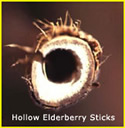USDA Forest Service Celebrating Wildflowers
|
|
|
Home-Made Sweet Homes
It’s easy to build a “Bee Condo” for native bees!Many of the wild bees you may encounter in your backyard garden make their burrow homes in the soil. Some bees create hives in snags (a dead or dying standing tree, often with its branches broken off), or in holes in trees. The activity of native bees will encourage the reproduction of native plants in your yards and gardens. You can encourage native bees to nest near your wildflower gardens by providing man-made nesting blocks, or “Bee Condos.” Materials You Will Need
How to Do It
For more information about pollinators and pollinator gardening: North American Pollinator Protection Campaign (NAPPC) |
|
| NOTE: PDF format links require the Adobe Acrobat Reader to view. | |
| top | Disclaimers | FOIA | Privacy Policy | Quality of Information | Photo Credits & Use |
Location: http://www.fs.fed.us/wildflowers/pollinators/beebox.shtml
Last modified: Tuesday, 20-May-2008 15:56:08 EDT


